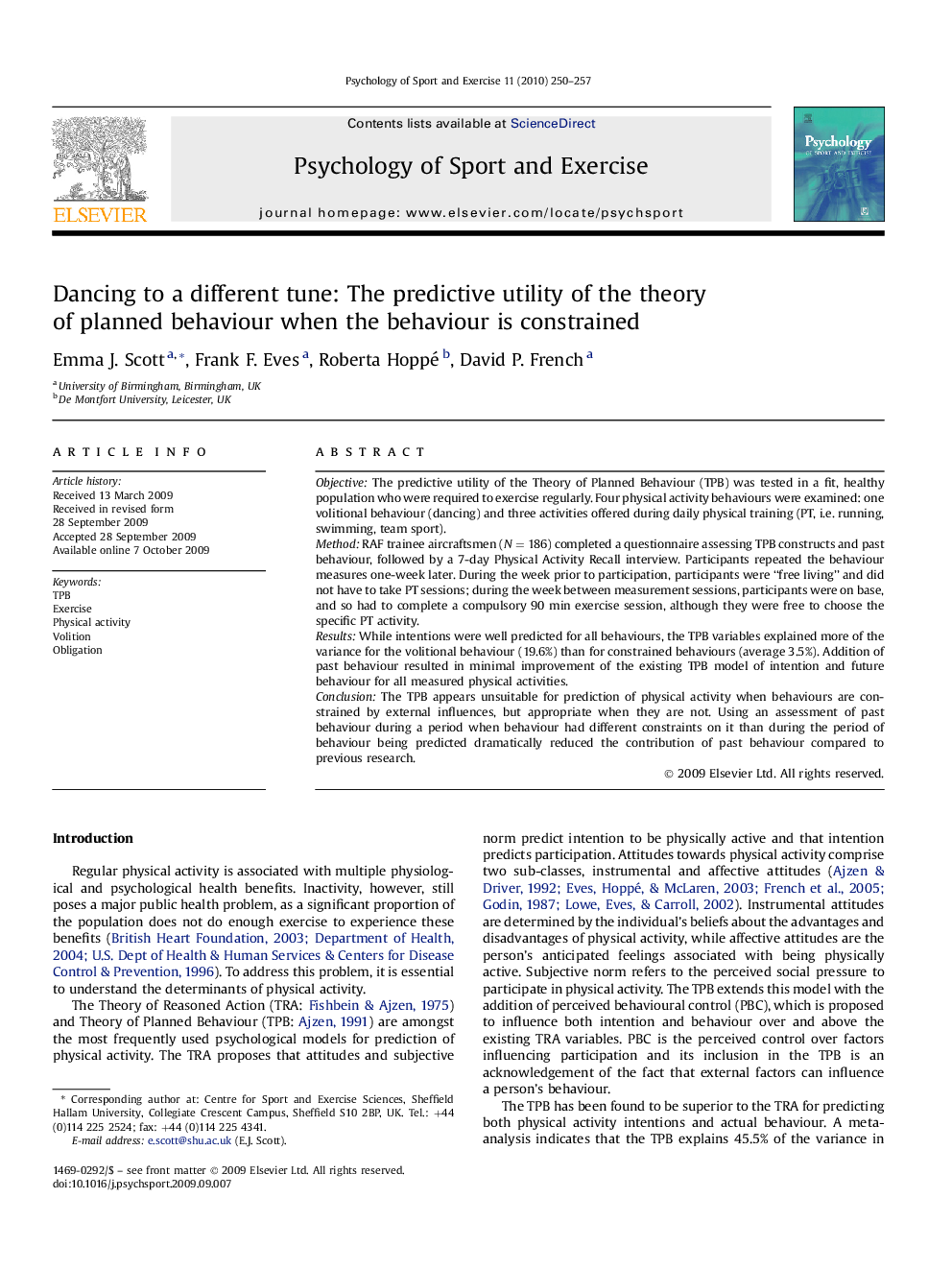| Article ID | Journal | Published Year | Pages | File Type |
|---|---|---|---|---|
| 894750 | Psychology of Sport and Exercise | 2010 | 8 Pages |
ObjectiveThe predictive utility of the Theory of Planned Behaviour (TPB) was tested in a fit, healthy population who were required to exercise regularly. Four physical activity behaviours were examined: one volitional behaviour (dancing) and three activities offered during daily physical training (PT, i.e. running, swimming, team sport).MethodRAF trainee aircraftsmen (N = 186) completed a questionnaire assessing TPB constructs and past behaviour, followed by a 7-day Physical Activity Recall interview. Participants repeated the behaviour measures one-week later. During the week prior to participation, participants were “free living” and did not have to take PT sessions; during the week between measurement sessions, participants were on base, and so had to complete a compulsory 90 min exercise session, although they were free to choose the specific PT activity.ResultsWhile intentions were well predicted for all behaviours, the TPB variables explained more of the variance for the volitional behaviour (19.6%) than for constrained behaviours (average 3.5%). Addition of past behaviour resulted in minimal improvement of the existing TPB model of intention and future behaviour for all measured physical activities.ConclusionThe TPB appears unsuitable for prediction of physical activity when behaviours are constrained by external influences, but appropriate when they are not. Using an assessment of past behaviour during a period when behaviour had different constraints on it than during the period of behaviour being predicted dramatically reduced the contribution of past behaviour compared to previous research.
